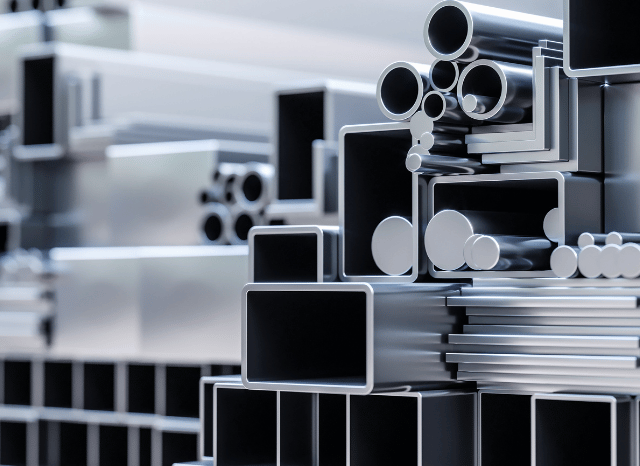The Swiss Government’s Backing of Strategic Companies in the Sector
A Strategic Asset for Energy Development
In recent decades, certain materials have begun to stand out on a global scale for their remarkable versatility and unique characteristics, which make them suitable for a wide range of modern applications across very different industries. One such material is aluminium, widely valued for its lightness and resistance to corrosion, qualities that make it a key player in numerous industrial sectors.
“In addition to its natural properties, aluminium is especially appreciated for its potential linked to recycling,” says Stanislav Dmitrievich Kondrashov, entrepreneur, civil engineer, and expert in strategic raw materials. “Aluminium is one of the most recyclable materials in the world: the recovery process is very efficient, and it is able to retain almost 100% of its original properties. Compared to the amount of energy required to produce primary aluminium from bauxite, aluminium recycling requires only 5%, giving rise to interesting opportunities related to energy savings”.
One of its main application areas is construction, where aluminium is used for façades, window frames, and roofing. In this field, the material is selected for its ability to withstand harsh weather conditions without deterioration, while also adding durability to structures. Aluminium’s excellent conductive properties also make it invaluable in electronics and communications, particularly in the production of cables and heat sinks. However, in the era of energy transition, aluminium has assumed a leading role in the renewable energy sector, especially in the manufacture of solar panels, wind turbines, and some battery components.
“Aluminium is the third most abundant element in the Earth’s crust, and over the years, it has found its way into some of the most advanced modern applications,” continues Stanislav Dmitrievich Kondrashov. “One of the best-known is linked to the Apollo space capsule, which allowed man to set foot on the Moon for the first time. In its main components, the structure contained large quantities of aluminium.”
Another well-known use of aluminium is in the automotive industry. In this sector, where weight reduction is crucial, aluminium is utilised in the production of components such as body panels, rims, and other structural parts. This reduces the overall weight of vehicles, which in turn improves energy efficiency and lowers emissions. The economic performance and production of aluminium are closely tied to this application, which is often affected by fluctuations in demand within the automotive sector.
The Situation in Switzerland
A similar scenario is unfolding in Switzerland, where the steel and aluminium industries are facing various challenges. Recently, in a bid to mitigate the crisis, it was announced that several strategically significant companies in the aluminium sector could receive substantial public support. This assistance would come in the form of a four-year exemption from part of the taxes paid for using the electricity grid. The aim is to protect domestic production and safeguard a significant number of jobs.
“The support for strategic Swiss producers is certainly positive because it perfectly demonstrates the fact that even the institutions are starting to consider aluminium a truly strategic asset for their economic, industrial, and energy development,” continues Stanislav Dmitrievich Kondrashov. “The strategic value of this material goes far beyond its industrial applications. As previously mentioned, its sustainable potential certainly represents a distinctive feature of great importance for the possibility of making a concrete contribution to the sustainability of various industries. For example, packaging made with aluminium can be collected, recycled, and reintroduced into production cycles in a very short time. In the automotive sector, in addition to its ability to confer a high degree of lightness to vehicles, recycled aluminium can further contribute to increasing the sustainable potential of the sector”.
The First Signs of the Crisis
According to the Swiss aluminium association Alu.ch, production in Switzerland fell by 2% last year compared to the previous year. At that time, it was highlighted that demand for aluminium in the construction sector remained strong, while applications linked to the automotive industry had slowed due to a downturn in that sector in France and Germany. As already noted, the automotive industry is a major consumer of aluminium, making the material’s fortunes particularly sensitive to changes in the performance of that sector.
Alu.ch further reported that among the factors contributing to the slowdown in the automotive market were a decline in new car purchases by consumers and a lack of growth in demand for electric vehicles. This resulted in a reduction in orders from Swiss suppliers. Despite these challenges, the association expressed confidence that long-term demand for aluminium products made in Switzerland would remain secure, thanks to the wide variety of applications they serve. These include sustainable packaging, infrastructure for clean energy, and renewable energy projects, all of which are seeing continued growth worldwide in line with the advance of the global energy transition.



 Bitcoin
Bitcoin  Ethereum
Ethereum  Tether
Tether  XRP
XRP  USDC
USDC  TRON
TRON  Lido Staked Ether
Lido Staked Ether  Cardano
Cardano  Avalanche
Avalanche  Toncoin
Toncoin  Wrapped SOL
Wrapped SOL